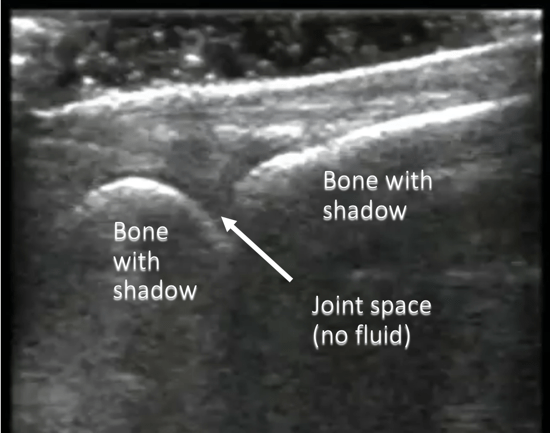Look Before You Stick!
Look Before You Stick
Narration
So ultrasound can be helpful in any procedure where you are trying to access fluid, but an important principle is that before you put a needle in something, you want to make sure there actually is a fluid collection that you can access. This is an example of a patient who was thought to have a joint effusion at the metacarpophalengeal joint of the hand-it was swollen and tender, but when you look with ultrasound, if you look carefully you can see
Arthrocentesis


Narration
bones, the shadowing, and the joint space and there is really no fluid in this space, so it's going to be futile to try to put a needle in that.
Arthrocentesis
Narration
This is contrasted to a knee effusion here where we see that needle going in and entering that fluid filled space. If you have a large joint effusion you may not need ultrasound to identify it, but in this case we can find the shortest distance between the skin and the fluid collection and here we are showing dynamic guidance of the needle into the space.
Cellulitis Vs. Abscess
“Cobblestoning”
Narration
Cellulitis Vs. Abscess
Note air bubbles
Narration
Other
Narration
US Guided Procedures - Summary
- Start with peripheral IV access
- Understand in-plane vs. out-of-plane
- Know where your needle tip is
- Practice!!!
Narration
?
main Pv# 1 , InitialPages , pix False , #Drops 0 ;
trys 0